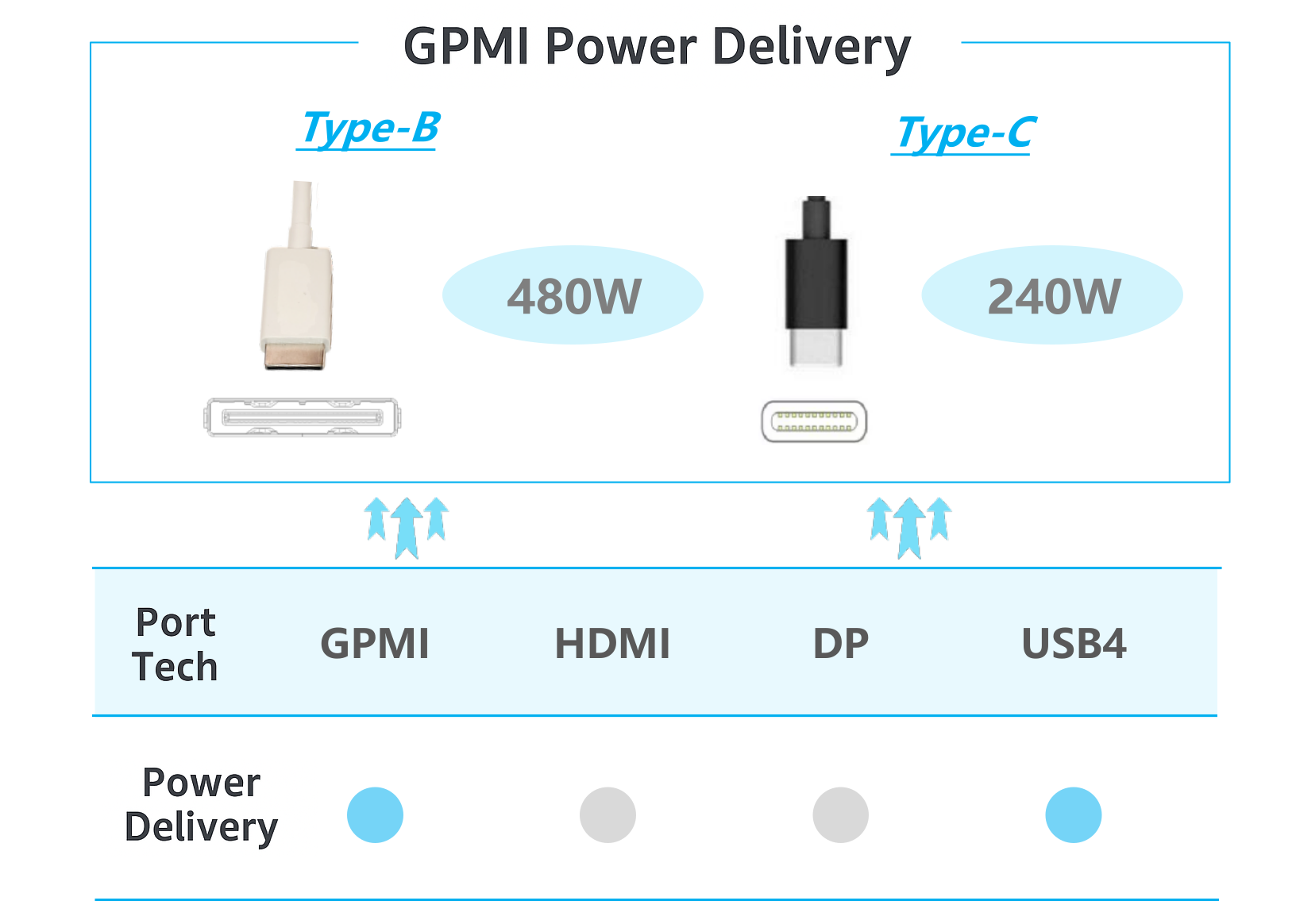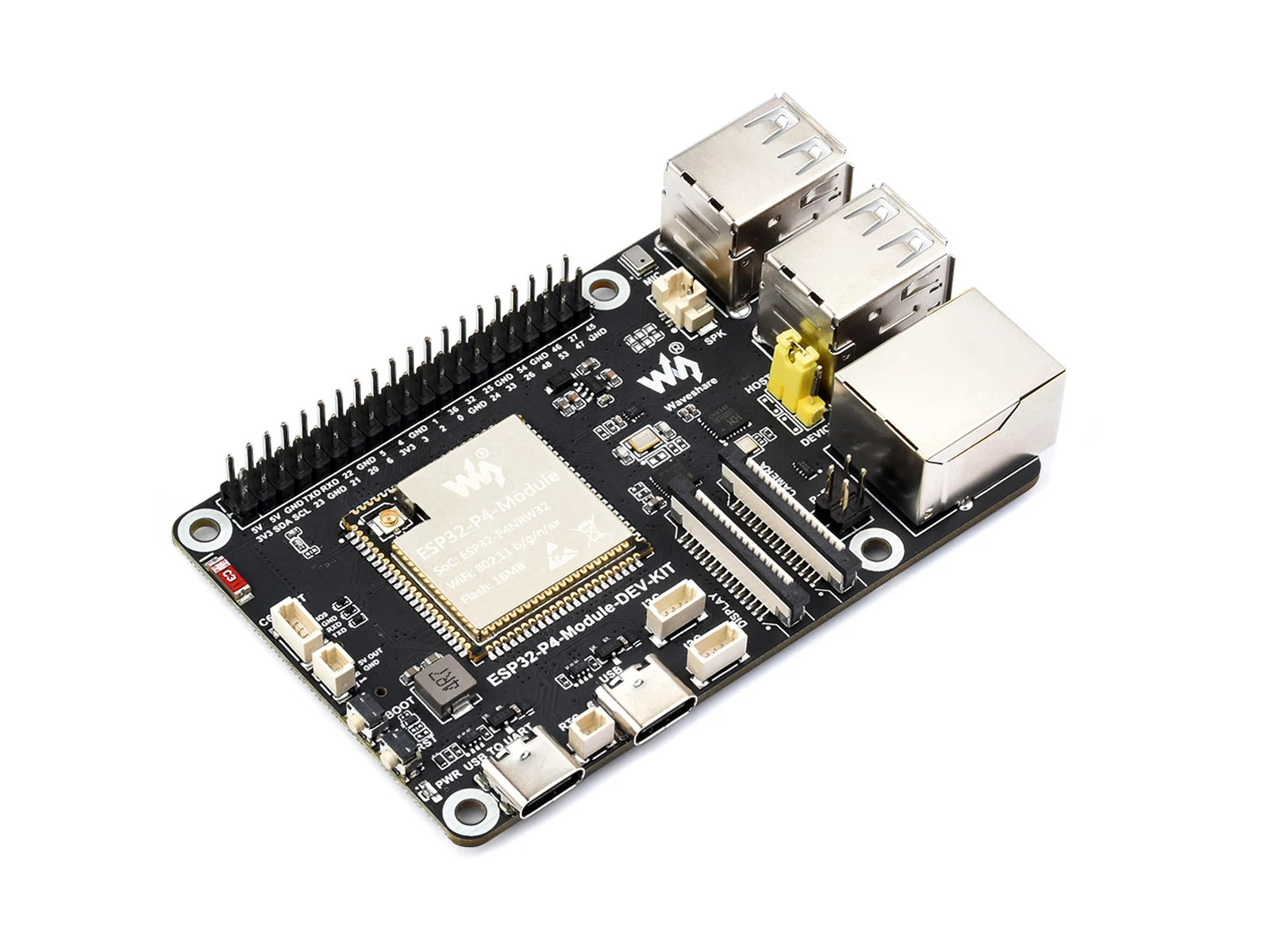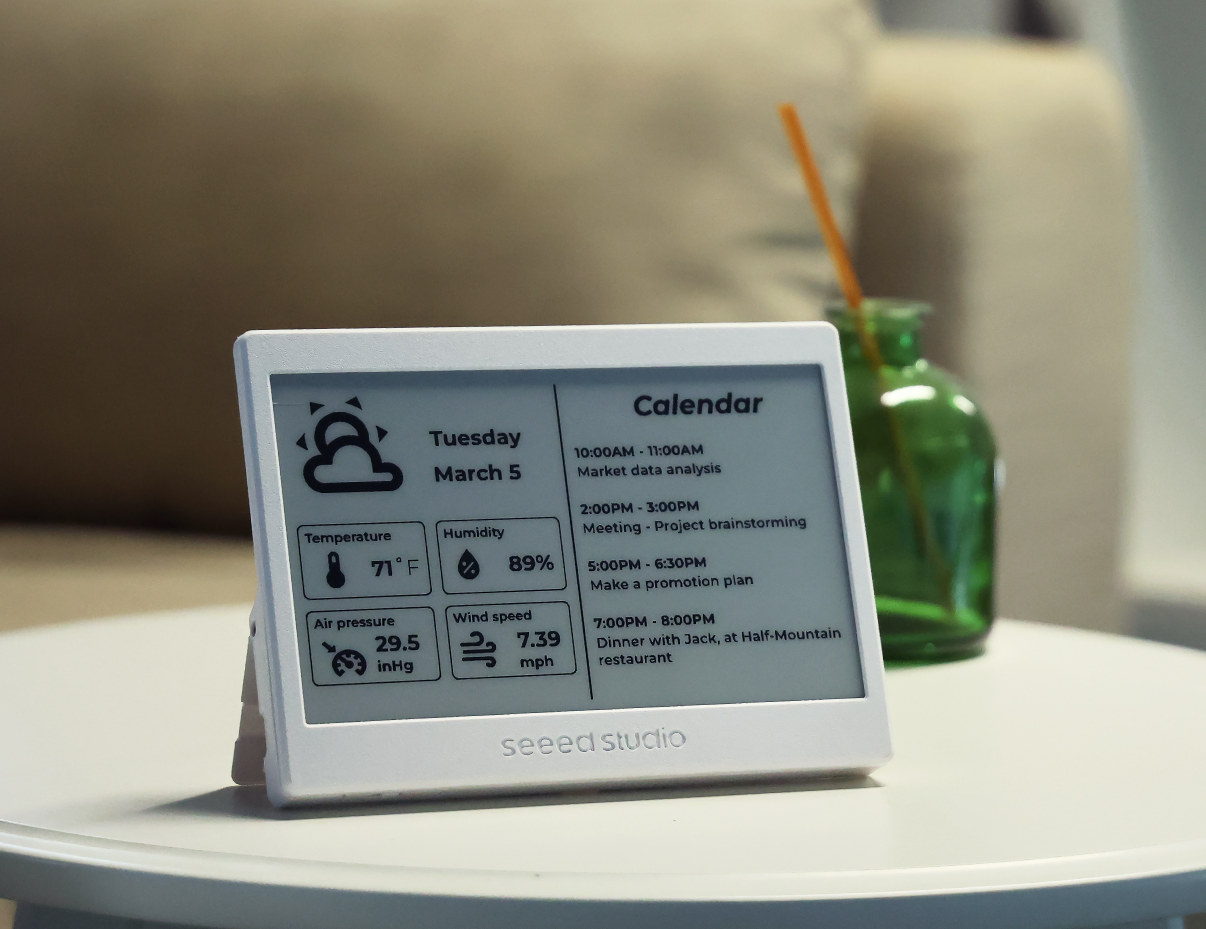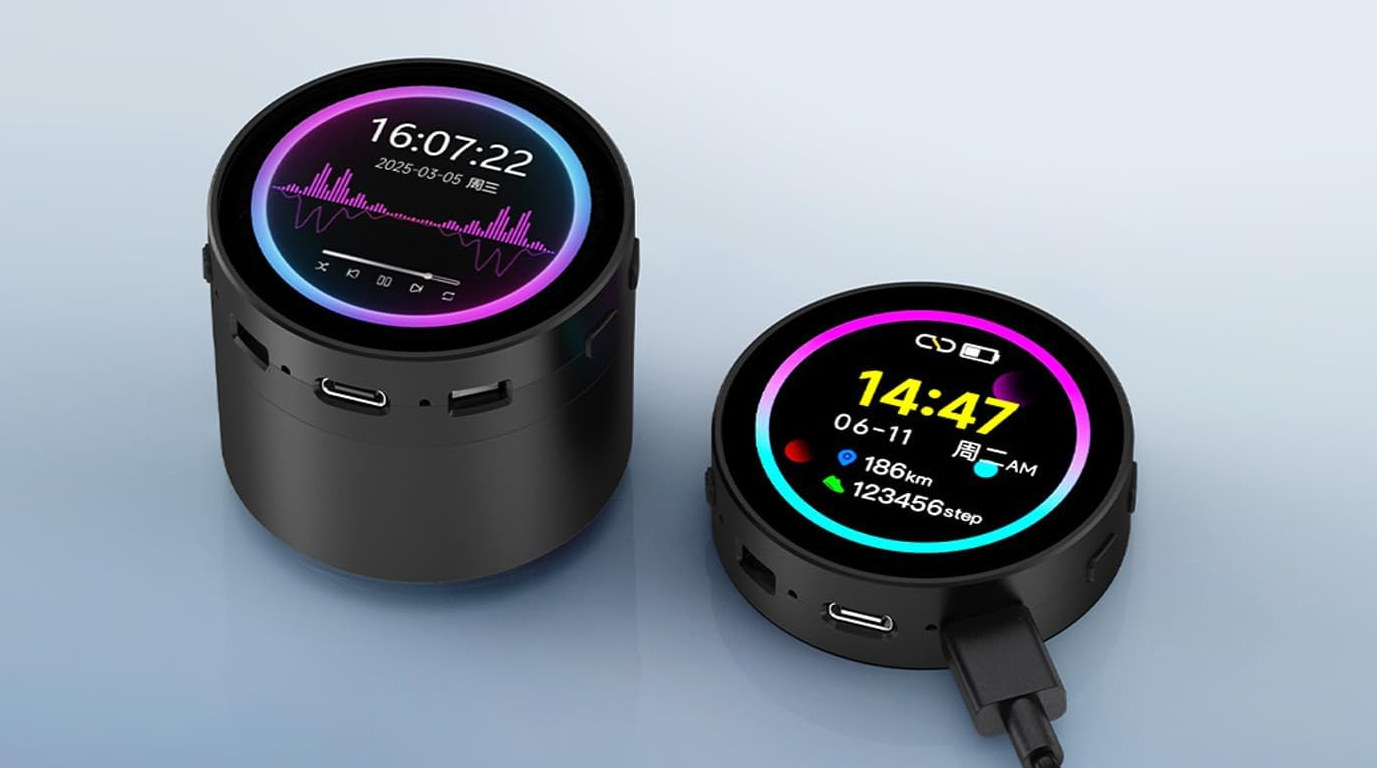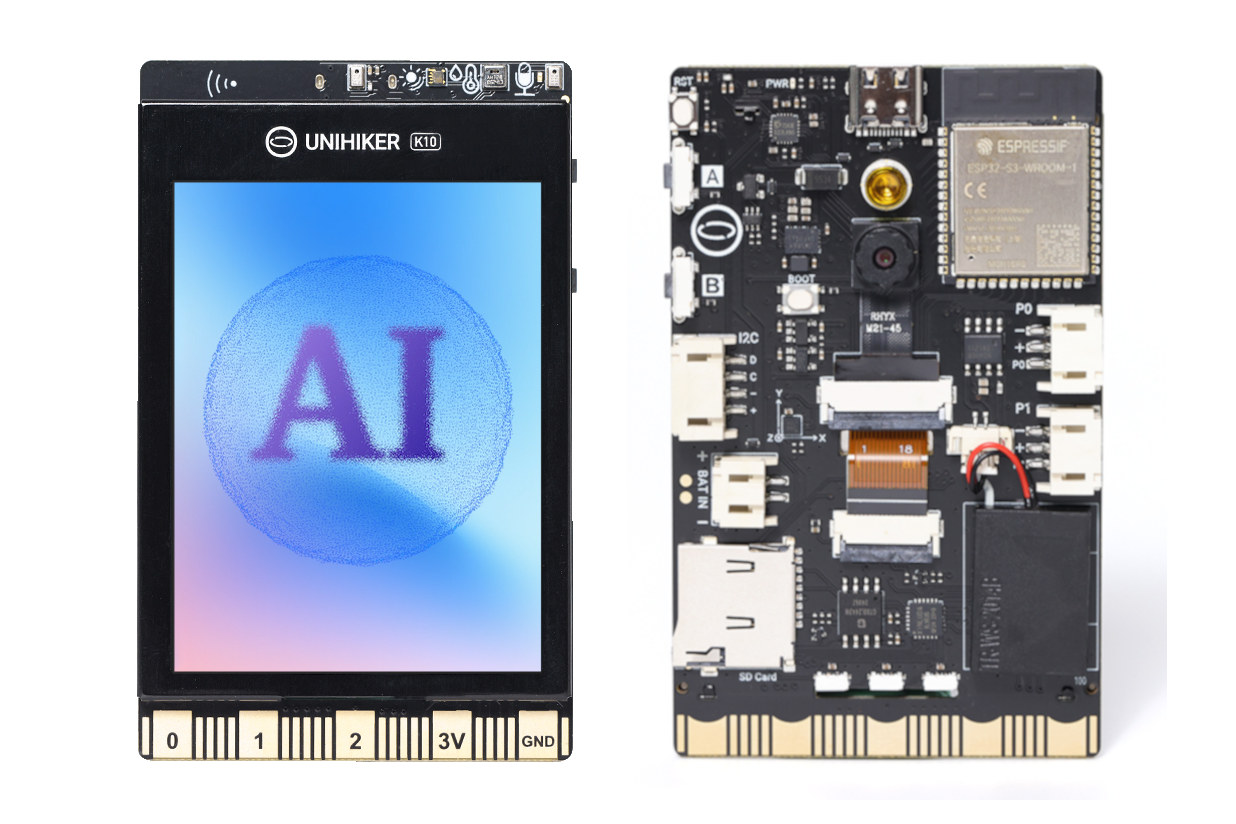LILYGO T-Pico-2350, also called the T-Pico2, is a fully enclosed devkit based on Raspberry Pi RP2350 MCU, an ESP32-C6 SoC for wireless connectivity, a 2.33-inch capacitive color touchscreen display, and an HDMI (DVI) video output port. The design is an update to the T-PicoC3 introduced in 2022 with the case design of the T-Display S3 Pro, and the devkit also features a microSD card slot, a USB-C port for power and programming, two GPIO headers, a 13-pin GPIO FPC connector, two Qwiic I2C/UART connectors, and a PMU for battery management. T-Pico-2350 specifications: Microcontroller – Raspberry Pi RP2350A CPU Dual-core Arm Cortex-M33 @ 150 MHz with Arm Trustzone, Secure boot OR Dual-core RISC-V Hazard3 @ 150 MHz Up to two cores can be used in any combination Memory – 520 KB on-chip SRAM Storage 16MB SPI flash connected to RP2350 MicroSD card slot Display – 2.33-inch color IPS LCD (ST7796S SPI […]
Samsung 32″ EMDX color e-paper display runs Tizen 8.0, offers 2560×1440 resolution, up to 200 days of battery life
Samsung has unveiled a 32-inch color e-paper display with WQHD (2,560 x 1,440) resolution and a built-in 4,600mAh battery that can last up to 200 days on a charge if the display is updated once a day. The Samsung 32″ EMDX color e-paper display is mainly designed for digital signage applications in shops, restaurants, public transportation, and public spaces. Like other e-paper displays, it does not consume any power if the image is unchanged. I was initially surprised at the bright colors of the EMDX display from the photos shared by Samsung, but after a closer look, I’m not convinced those are photos of the actual display. Samsung 32″ EMDX color e-paper display specifications: 32-inch E-Ink Spectra 6 Color ePaper with 2,544 x 1,400 resolution, up to 54,600 colors with dithering, 178° H/V viewing angle Storage – 8 GB eMMC flash Wireless – WiFi 5 and Bluetooth 5.0 Ethernet – […]
GPMI is a Chinese alternative to HDMI and DisplayPort with up to 192 Gbps bandwidth, 480W Power Delivery
Defined by the Shenzhen 8K UHD Video Industry Cooperation Alliance (SUCA), GPMI (General Purpose Media Interface) is an alternative to HDMI and DisplayPort supporting up to 192 Gbps bandwidth and 480W power delivery (PD). As far as I know, the specifications have not been made public just yet, but ITHome.com shared some photos and details. The GPMI standard defines two types of connectors: Type-B and Type-C (USB-C) with support for 192 Gbps/480W PD and 96 Gbps/240W PD, respectively. Here’s how GPMI compares to the latest HDMI and DP versions. The best resource I’ve found about the GPMI standard is a white paper shared by Hisilicon. It requires email registration, and it’s only in Chinese, but I’ve translated some of the slides for reference. The Type-B port looks like a compressed HDMI port, which might be great for laptops and tablets, while the Type-C port appears to be identical to a […]
ESP32-P4 credit card-sized board features Ethernet, WiFi 6, four USB ports, 40-pin GPIO header, MIPI DSI and CSI connectors
Waveshare ESP32-P4-Module-DEV-KIT credit card-sized board may look like a Linux-powered Raspberry Pi SBC, but instead, it’s based on an “ESP32-P4-Module” comprised of a 400 MHz Espressif ESP32-P4 RISC-V general-purpose microcontroller, an ESP32-C6 “co-processor” for WiFi 6 and Bluetooth 5, and a 16MB SPI NOR flash. Designed for HMI applications, the board offers MIPI DSI and CSI connectors, as well as a 100Mbps Ethernet RJ45 jack, four USB 2.0 ports, a 40-pin GPIO header, and more. It basically integrates the same ports as a Raspberry Pi SBC minus HDMI, but relies on a microcontroller instead of a Linux-capable application processor. Waveshare ESP32-P4-Module-DEV-KIT specifications: ESP32-P4-Module Microcontroller – ESP32-P4NRW32 MCU Dual-core RISC-V microcontroller @ 400 MHz with AI instructions extension and single-precision FPU Single-RISC-V LP (Low-power) MCU core @ up to 40 MHz GPU – 2D Pixel Processing Accelerator (PPA) VPU – H.264 and JPEG codecs support Memory – 768 KB HP L2MEM, […]
Seeed Studio XIAO 7.5″ ePaper panel supports ESPHome firmware, Arduino programming
Seeed Studio XIAO 7.5″ ePaper Panel interfaces an XIAO ESP32-C3 USB-C board and mainly targets the Smart Home market with support for ESPHome, but the monochrome ePaper display is also programmable with the Arduino IDE for a wider range of applications. The display offers a resolution of 800×400 and includes a 2,000mAh battery good for three months per charge with updates every 6 hours. Seeed Studio says the display can operate in the -40°C to 85°C temperature range, so it would be suitable for outdoor use as long as it’s not exposed to rain or dust. The USB-C port of the ESP32-C3 module and the Boot and Reset buttons are easily accessible for charging the display and programming it. XIAO 7.5″ ePaper Panel specifications: Wireless module – XIAO ESP32C3 SoC – Espressif Systems ESP32-C3 CPU – Single-core RISC-V microcontroller @ 160 MHz Memory/Storage – 400KB SRAM, 384KB ROM, 4MB flash […]
Batteryless 7.5-inch NFC-powered e-paper display V2 gets new NFC chip and “fast flashing method”
Back in 2020, we wrote about Waveshare’s Batteryless NFC e-paper display, which can work without a battery and draws power and data from an NFC-enabled smartphone or the company’s ST25R3911B NFC board. Waveshare has now released a V2 version of this display with a new and improved NFC chip, a “fast flashing method”, and enhanced contrast. The new batteryless, 7.5-inch NFC-powered e-paper display features an 800×480 resolution and updates via an NFC-enabled smartphone or reader. It offers a 170° viewing angle and comes in a durable ABS plastic shell. The ST25R3911B NFC board allows updates via USB, SD card, or serial port, with an optional password lock. However, precise NFC positioning is required for updates. These features make it ideal for shelf labels, equipment tags, and other applications. Waveshare 7.5-inch NFC e-paper display V2 specifications: 7.5-inch e-paper display 800×480 resolution Display color black and white 170° viewing angle Refresh Time […]
ESP32-S3 Smart Audio devkit integrates 1.8-inch round touch LCD, microphone, optional battery and speaker box
Waveshare ESP32-S3-Touch-LCD-1.85C is an ESP32-S3 development kit with a 1.85-inch round touchscreen display with 360×360 resolution, support for Wi-Fi & Bluetooth BLE 5, and a built-in microphone. There’s also the ESP32-S3-Touch-LCD-1.85C-BOX with the same specifications, but an additional box with a speaker and a 3.7V battery. Both versions come with 16MB SPI flash, a microSD card slot, a USB-C port, a few buttons, GPIO and I2C expansion headers, and can be used as music players, smart speakers, HMI solutions, etc… It’s not quite the first ESP32-S3 audio + display devkit we’ve covered, as Waveshare introduced the ESP32-S3-Touch-AMOLED-1.8 earlier this year with a squared AMOLED display, and Wireless Tag launched the ESP32 Agent Dev Kit to interface with LLMs. ESP32-S3-Touch-LCD-1.85C specifications: SoC – Espressif ESP32-S3R8 CPU – Dual-core Tensilica LX7 microcontroller up to 240 MHz with vector instructions for AI acceleration Memory – 8MB PSRAM Wireless – WiFi 4 and Bluetooth […]
UNIHIKER K10 low-cost TinyML education platform supports image detection and voice recognition
UNIHIKER K10 is a low-cost STEM education platform for TinyML applications that leverages the ESP32-S3 wireless microcontroller with vector extensions for workloads such as image detection or voice recognition. The UNIHIKER K10 also features a built-in 2.8-inch color display, a camera, a speaker, a 2-microphone array, a few sensors, a microSD card, and a BBC Micro:bit-like edge connector for power signals and GPIOs. It’s a cost-optimized version of its Linux-based big brother – the UNIHIKER M10 – first unveiled in 2022. Arnon also reviewed the UNIHIKER in 2023, showing how to configure it, use the SIoT platform with MQTT message, and program it with Jupyter Notebook, Python, or Visual Studio Code. Let’s have a closer look at the new ESP32-S3 variant. UNIHIKER K10 specifications: Core module – ESP32-S3-WROOM-1 MCU – ESP32-S3N16R8 dual-core Tensilica LX7 up to 240 MHz with 512KB SRAM, 8MB PSRAM, 16MB flash Wireless – WiFi 4 and […]




